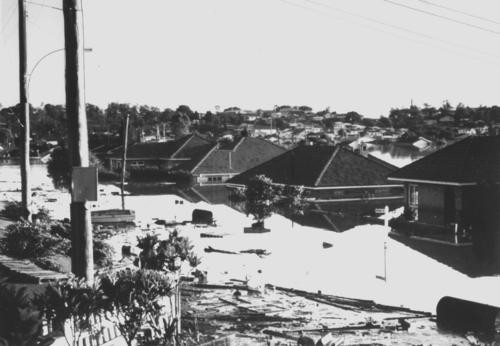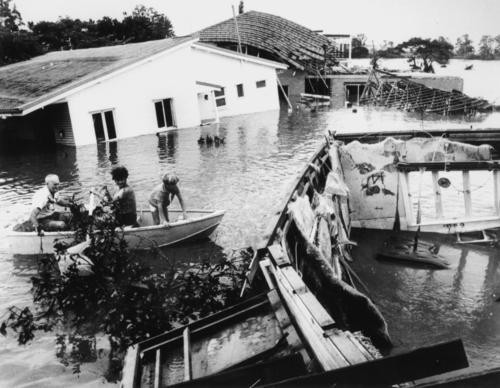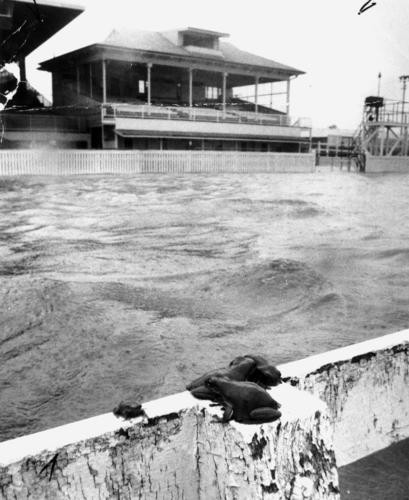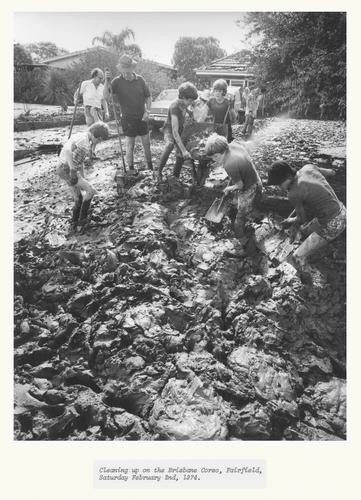Visions of decay: the 1974 Brisbane flood in Manfred Jurgensen’s novel ‘The eyes of the tiger’
By Simon Miller, Library Technician, State Library of Queensland | 4 May 2012
Continuing our series of literary responses to Brisbane’s floods of the past, in conjunction with the Floodlines exhibition, we jump from 1893 to 1974. Manfred Jurgensen is a prolific award winning poet and author in both German and English. After holding a Personal Chair at the University of Queensland in German Studies, he now lives in Brisbane and the United States as a full-time writer. His 2005 novel ‘The eyes of the tiger’ uses the 1974 flood as a backdrop to explore “evil as a seductively demonic power of rampant decomposition, generating from the realm of personal intimacy to the corruption of civilized society”.

The presence of death announced itself in echoes of biblical prophecy.
Why was nature intent on devouring Queensland’s subtropical capital? What had its inhabitants done to deserve such a cruel fate? On weekends a handful of doomsday prophets gathered at King George Square, proclaiming their apocalyptic vision in self-righteous triumph. While the flood lasted, their terrible prediction prompted more than a few passers-by to give the possibility some thought. What if this were indeed the beginning of the End?
The threat of death manifested itself in many forms.
The mere act of looking out from the assumed safety of one’s home could prove an unsettling portent of one’s own decomposition. Owners of luxury apartments and houses featuring rooftop gardens watched with horror as an avalance of worms slithered down their windows in search of terra firma. Residents directing their sight out of the window found themselves confronted with reflections of their own face covered in maggots. Their image was coated in slime, droppings and mire.
In half-abandoned riverside suburbs home owners began to take up arms. The self-styled citizens’ militia carried rifles in order to protect the houses against looters. The sanctity of property was defiled by theft and plunder.
An elderly couple drowned trying to salvage their possessions of a lifetime.

A few old Queensland houses, built on stilts, lost their balance and collapsed into the river. With their white iron lace verandas they looked like old-time paddle-steamers as they were borne away by the current of the raging flood.
Barely completed, expensive display homes were left deserted by real estate agents and prospective buyers. Rabbits took refuge in luxurious double garages not yet fitted with doors. Designer pools turned into cesspools of green slime claimed by legions of copulating cane toads, while landscaped gardens dissolved into runny watercolours.

Most of the building industry came to a complete halt.
Under the weight of the continuing torrential downpour the guttering of many older houses gave way, either tumbling to the ground or hanging in the air like skeletal remains of suspended paratroopers.
Large cracks in the foundations of suburban homes, collapsed brick fences, falling roofs and broken driveway surfaces gave the appearance of earthquake damage. The fractures and lacerations looked like an imprint of the city’s veining.
Brisbanites no longer walked on firm ground. The very foundation of their lives had shown itself to be brittle.

Comments
Your email address will not be published.
We welcome relevant, respectful comments.